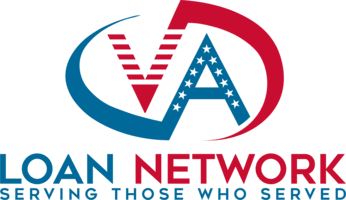The fate of thousands of veteran homeowners is hung in the balance as the VA-backed foreclosure prevention VASP program will soon lapse.
In recognition of the dire challenges likely to face veterans, the Mortgage Bankers Association (MBA) is urging legislators to implement a permanent partial claim VA program.
This measure would render overdue mortgage payments to be postponed until the loan is completed at 0% interest, aligning Veteran Affairs partial claim programs with other federal entities’ programs.
In this piece, we talk about why this measure is so important, how it works, and what this means for veterans nationwide.
In this Article
Why the MBA Is Pushing for a Permanent Partial Claim Program
The MBA, a leading voice for mortgage bankers and lenders nationwide, emphasizes that veterans deserve consistent and comprehensive home retention tools. Despite significant sacrifices in service to the country, many veterans are now at risk because the VA ended its Partial Claim Payment program in 2022. As of April 2025, nearly 90,000 VA borrowers are seriously delinquent, with 33,000 already in foreclosure proceedings. A partial claim VA loan solution would help these veterans catch up on missed payments and avoid foreclosure.
The Problem with VASP’s Phase-Out
The VASP program was introduced as a temporary measure in May 2024. It allowed the VA to purchase delinquent loans, modify them at a low 2.5% interest rate, and manage them directly. While the program helped approximately 20,000 veterans save VA loans from foreclosure, critics, including Rep. Derrick Van Orden, labeled it a “lender bailout” and questioned its reliance on taxpayer funds. On May 1, 2025, the VA ceased accepting new applicants into VASP, leaving a gap in veteran loan loss mitigation.
How a Partial Claim VA Loan Program Works
A permanent Veteran Affairs partial claim program would mirror similar structures used by FHA, Fannie Mae, and Freddie Mac. Here’s how it typically functions:
- Deferred Payments: Missed mortgage payments move to the end of the loan term, due when the property is sold or refinanced.
- No Interest: The deferred amount carries a 0% interest rate, minimizing long-term financial strain.
- Eligibility: Veterans must prove they can resume regular payments after a temporary hardship (e.g., job loss or medical costs).
- Preserves Loan Guaranty: The program should not reduce the VA’s 25% loan guaranty, maintaining lender confidence.
Comparison: VASP vs. Proposed VA Partial Claim Program
| Feature | VASP Program | Proposed Partial Claim Program |
|---|---|---|
| Purpose | VA buys and modifies delinquent loans | Defers missed payments to the end of the loan term |
| Interest Rate | 2.5% on modified balance | 0% on deferred amount |
| Availability | Ended May 1, 2025 | Proposed as permanent |
| Impact on Guaranty | None | Must clarify no reduction of VA’s 25% guaranty |
| Repayment | New loan terms set by VA | Deferred amount due at loan payoff or sale |
| Eligibility | Severe financial hardship | Ability to resume regular payments |
Why Veterans Need This Now
Veterans often face unique financial pressures, including challenges related to transitioning from military service or dealing with service-related disabilities. The end of the Partial Claim Payment program in 2022, followed by the VASP phase-out, has left veterans with fewer VA loan modification options. Other government-backed programs offer partial claim solutions, putting Veteran Affairs partial claim borrowers at a disadvantage if they fall behind. By establishing a permanent plan, the VA can:
- Reduce Foreclosure Risk: Provide a safety net for veterans amid unexpected setbacks.
- Align with Other Programs: Ensure parity with FHA, Fannie Mae, and Freddie Mac loss mitigation tools.
- Preserve VA Loan Confidence: Maintain lender participation by securing the VA’s 25% guaranty.
MBA’s Advocacy Efforts
The Mortgage Bankers Association VA loans agenda includes urging lawmakers to enact a permanent plan to help veterans facing foreclosure. In March 2025, Elizabeth Balce, Executive Vice President of Servicing at Carrington Mortgage Services, testified on behalf of the MBA before the House Committee on Veterans’ Affairs Subcommittee on Economic Opportunity. She called for:
- Clarifying Guaranty Protection: Ensuring partial claims never reduce the VA’s 25% loan guaranty.
- Eliminating Repayment Burdens: Removing any requirement to repay deferred amounts within three years to keep 0% interest.
- Increasing Claim Limits: Allowing partial claims up to 30% of the unpaid principal balance, aligning with FHA’s policies.
The MBA also supports the VA Home Loan Program Reform Act (H.R. 1815), introduced by Rep. Van Orden, which includes language for a lasting partial claim solution to save VA loans from foreclosure.
What Happens Without a Partial Claim Program?
If the VA and Congress fail to introduce a permanent veteran loan loss mitigation tool, veterans may have to rely on less favorable options, such as:
- Loan Modification: Potentially higher interest rates or monthly payments.
- Short Sale: Selling the home below the owed amount, with possible tax implications.
- Deed in Lieu of Foreclosure: Turning the property over to the lender and losing homeownership.
- Foreclosure: A devastating outcome that harms credit and future home-buying options.
Inaction risks damaging the reputation of VA loans, potentially discouraging lenders from offering them in the future.
How Veterans Can Protect Their Homes Now
While policymakers debate a permanent partial claim VA loan program, veterans can take immediate steps to prevent losing their homes:
- Contact Your Servicer: Discuss repayment plans, forbearance, or VA loan modification options if you miss a payment.
- Call the VA: Dial 877-827-3702 for free advice and counseling from a VA loan technician.
- Explore the Homeowner Assistance Fund: Homeowner Assistance Fund veterans programs may cover delinquent payments related to COVID-19 hardships.
- Seek HUD-Approved Counselors: Access free, expert guidance by visiting HUD’s housing counselor directory.
The Bottom Line
A permanent VA partial claim program would create a firm safety net for cash-strapped veterans, preventing unnecessary foreclosures and adhering to best practices used by FHA, Fannie Mae, and Freddie Mac.
The Mortgage Bankers Association (MBA) is still a vocal proponent of this initiative and supports legislative moves like the VA Home Loan Program Reform Act (H.R. 1815).
The lapse of VASP without a permanent substitute underscores the seriousness of this issue. Until final action is taken by the VA and Congress, veterans can seek temporary relief from their loan servicers, HUD-approved housing counselors, and other Homeowner Assistance Fund services.
Frequently Asked Questions
What is a partial claim program for VA loans?
It’s a veteran loan loss mitigation option allowing missed mortgage payments to be deferred to the end of the loan at 0% interest.
Why did the VA end the VASP program?
The VA ended VASP on May 1, 2025, citing operational constraints and the need for congressional authority to manage direct loan restructuring.
How does a partial claim differ from a VA loan modification?
A partial claim defers missed payments at 0% interest, while a VA loan modification may alter loan terms, potentially raising the interest rate or monthly payment.
Who qualifies for a partial claim program?
Veterans who can resume regular payments after a temporary hardship—like job loss or medical bills—are generally eligible.
How does the MBA’s proposal protect veterans?
By making a partial claim permanent, veterans avoid foreclosure, align with other federal programs, and keep the VA’s 25% loan guaranty intact.
What is the VA Home Loan Program Reform Act (H.R. 1815)?
It’s proposed legislation aimed at establishing a permanent partial claim solution and reforming VA loan loss mitigation policies.
Does a partial claim reduce the VA loan guaranty?
The MBA advocates that it should not. The deferred amount stays at 0% without compromising the VA’s 25% loan guaranty to lenders.
Can veterans get assistance without a partial claim program?
Yes. Veterans can reach out to their servicers, the VA for direct counseling, or programs like Homeowner Assistance Fund veterans support for help.


